Avoiding cost overrun is key to closing a successful project. The quality of deliverables and a timely execution can go out the window if the project is delivered over budget.
Of course, it’s easy to say you’re going to keep a tight budget. But cost overrun can happen in so many places that keeping costs down can sometimes feel like a game of whack-a-mole.
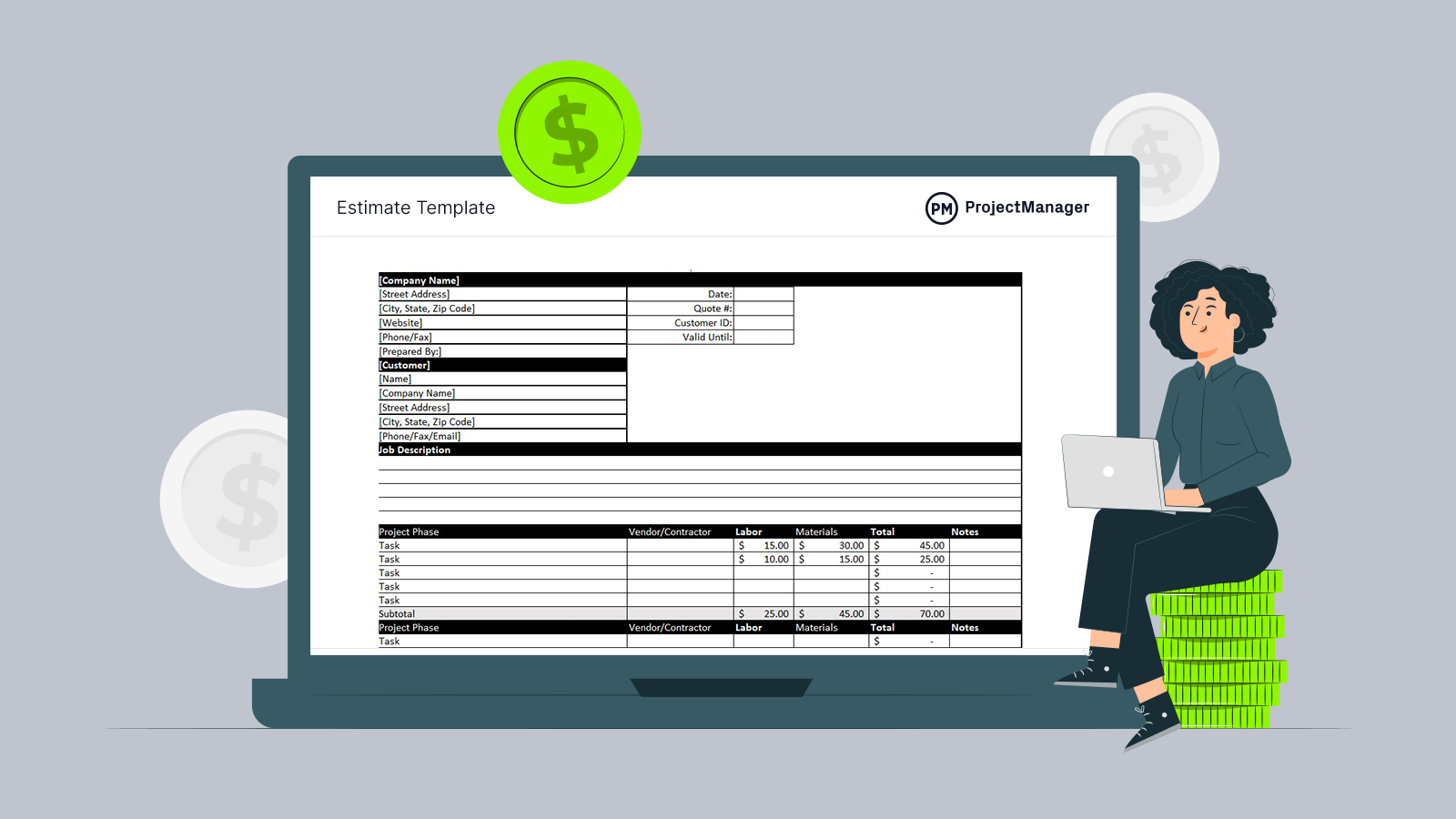
Get your free
Project Estimate Template
Use this free Project Estimate Template for Excel to manage your projects better.
What Is Cost Overrun?
The term cost overrun refers to unexpected costs that end up exceeding a project budget. Cost overrun can occur in any project and it’s particularly common in construction, manufacturing and software development projects. Cost overrun is also known as a cost increase or budget overrun and can be caused for several reasons.
Before we delve into the reasons that projects can go over budget, let’s look at project management software that can help you prevent cost overrun. ProjectManager is software that collects real-time data to help you better monitor your expenses. Our Gantt chart is a great way to plan and track your costs. All of this data automatically transfers to our other project views such as the dashboard. Unlike lightweight tools, there’s no setup required. Get started with ProjectManager for free today.
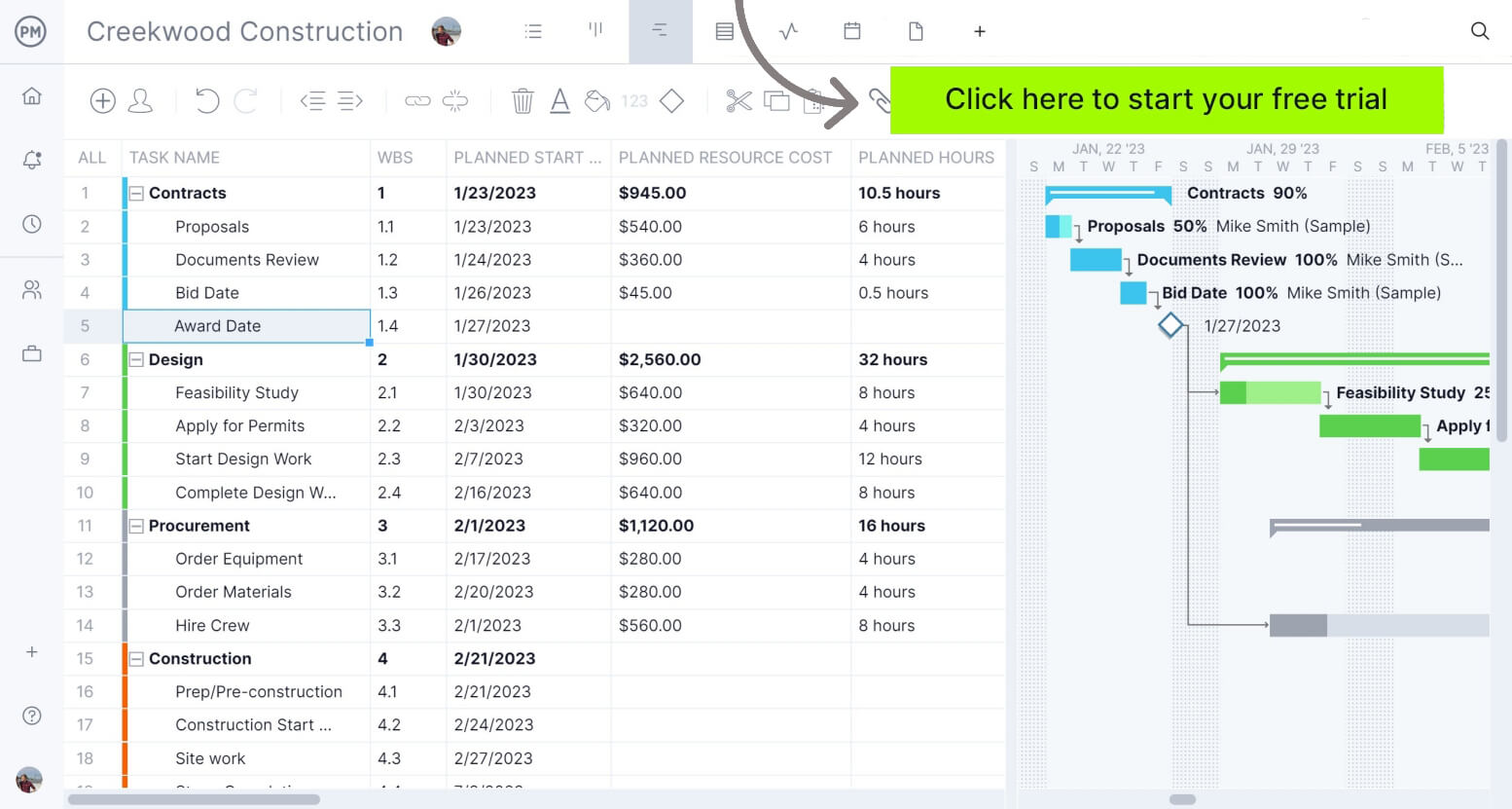
Main Causes of Cost Overrun
Cost management can be an exhausting task. As a project manager, you’ll constantly need to check your project costs to make sure things are going well at all times. In addition to this, you’ll also need to monitor other project constraints such as time, scope, risk and quality.
We’ve listed the main causes of cost overrun below so you can avoid this issue and deliver your projects on time and under budget.
- Bad project estimates: Cost estimation is critical for success in project management because every project manager must estimate all project costs before creating a project budget. Make sure to use all the tools at your disposal such as historical data or a panel of experts to help you define project costs. If your project budget is insufficient, you’re very likely to face cost overrun.
- Scope creep: Scope creep occurs when your project scope isn’t well defined. In simple terms, this means that you’ll have unexpected tasks popping up during the execution phase. Executing unforeseen tasks increases your costs, making it very likely to exceed your project budget and cause cost overrun.
- Poor risk management: Any project faces many potential risks. It’s the responsibility of the project manager and the project management team to create a risk management plan that describes all the potential risks and the mitigation strategies to be implemented if needed. When a risk management plan is not created, you can have unexpected risks affect your project, which brings costs up and therefore, causes cost overrun.
- Lack of communication: A project is an endeavor that requires teamwork and communication. As a project manager, you must be the glue that keeps your project sponsor, project team and project stakeholders together. Lack of communication can result in unexpected changes to the project plan or prompt other issues that could cause cost overrun.
- Poor change management: Without effective change management processes, scope creep can result in additional work and costs. Not prioritizing changes can divert resources and delay work, increasing overall project costs. The timeline and workflow can also be disrupted, impacting the budget.
- Equipment failures: This leads to downtime, which increases labor costs, but also can create extra repair or replacement costs. It also impacts productivity, which can lead to additional shifts and costs. Or it can create delays in delivery that disrupt the supply chain. Quality can also be affected.
- Unforeseen risks: Risk is always possible and can interrupt the project and create added costs. These risks vary from “acts of God,” such as environmental issues, to regulatory or market changes. Theft is also a risk that’s often neglected but can hurt production.
- Inflation and other economic conditions: This can be considered part of managing risk, but some issues related to inflation and the economy can be easier to predict. For example, managers can likely forecast resource scarcity and fluctuations in the price of resources. Still, many economic conditions can occur suddenly and must be prepared for in advance.
- Lack of project controls: Monitoring projects as they’re executed isn’t simply to keep stakeholders informed. It’s a way to measure the plan against actual progress, cost, etc. Therefore, when discrepancies are identified, controls should be put in place to get the project back on track before it negatively impacts the budget.
- Inefficiencies in the project team execution process: The project may be well planned, but if the team members fail to perform, these delays will generate additional labor costs. Or they might waste materials, which results in resource scarcity. This is why monitoring and controlling is so important. It captures these inefficiencies and responds quickly to them.
- Inefficient resource allocation: Project managers might allocate too many resources for certain tasks such as assigning two employees to a task when one is required. If this occurs throughout the project, the labor costs will exceed what was budgeted.
- Supply chain issues: There are issues outside of the project planning and execution that can end up costing the company more than expected. For example, supply chain issues. These can be a poor performance by contractors or suppliers, which causes delays, quality problems or rework. Any of these issues will result in cost overruns.
How to Avoid Cost Overrun
Cost overrun, or any sort of expense that pushes a project past the agreed-upon budget is something with which a project manager must be constantly vigilant. There are several ways one can prevent cost overrun.
Here are seven tips to help keep reigns on your budget.
1. Thorough Project Planning
The best way to stop cost overrun is to plan against it before executing a project. The more thorough and accurate your estimates, the more likely you’ll stay within budget. The project risks can be accounted for with an exhaustive risk management plan. When planning for any project, you must consider all possible scenarios and use historical data, interviews and experience. Once that plan has been detailed, the stakeholders of the project should sign off on it so everyone is on the same page in terms of expectations.
2. Know Your Vendors
Many projects require assistance from outside vendors, whether to help with specific tasks or supply materials and equipment. A relationship with any outside vendor opens your project up to cost overruns that are often beyond your control. This makes it critical to do due diligence before relationships are cemented.
First, understand the capacity of the vendor and if they’re going to meet your needs. When the vendor quotes a cost, make sure it’s accurate. Then, before signing the contract, do a bit of background-checking to see if the vendor meets deadlines and see what others have to say about working with them.
3. Keep to Planned Scope
Scope creep is one of the biggest threats to sending a project into cost overrun. Change requests always bog down the desks of project managers. These come from stakeholders or clients, but also from team members. They all have wants and needs. Many of them may be appropriate and even beneficial to the project. However, too many changes can drastically impact the project, making cost overruns unavoidable. Put thought into the big picture before you increase project scope.
4. Use a Project Planning Tool
It’s a given that a powerful tool will make a project manager’s work easier, add to the productivity of the project and increase efficiencies. It also assists in keeping cost overruns at a minimum. A scheduling tool like a Gantt chart can help keep the project on track and prevent cost overruns.
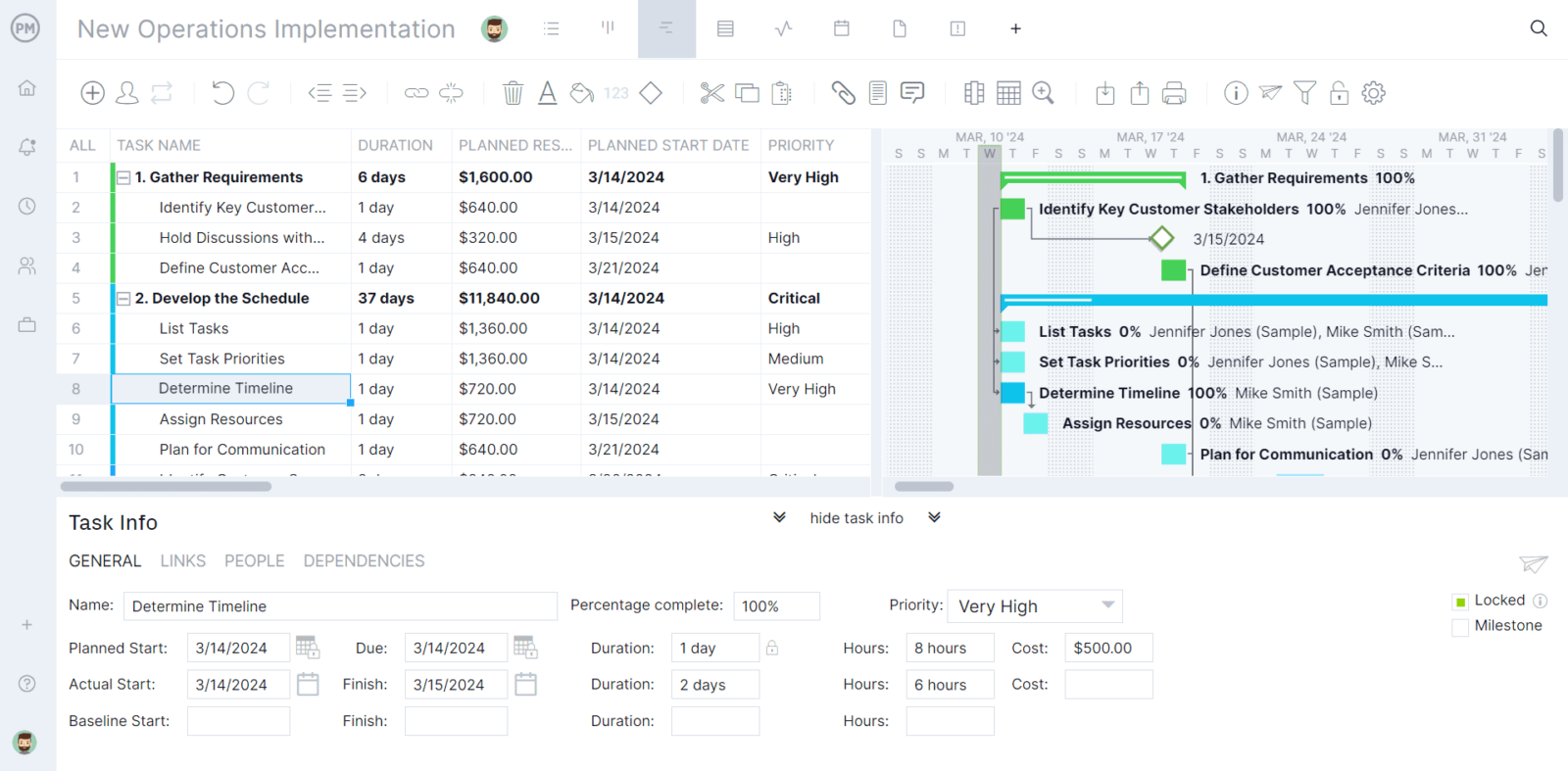
5. Keep Stakeholders Updated
If there isn’t a clear line of communication between stakeholders and project managers, delays are inevitable. Delays lead to cost overruns and there’s too great of a risk that work will start on the wrong task at the wrong time. This wasted time threatens to send the whole project off track.
Stakeholders, as well as teams, need proper communication, but each should get the right information. Teams want details while stakeholders want broad strokes to make sure the project is progressing as planned.
6. Monitor Progress
The real-time dashboard from ProjectManager is also ideal for tracking the progress of a project as it happens. Before issues become problems that threaten the project’s schedule and budget, they can be resolved. The real-time dashboard measures not only the project’s progress but the team’s workload and timelines for planned and actual completion, including project slippage and more.
7. Reassign Resources
If you discover a project that’s spending more than budgeted, you’re going to respond by reallocating resources. But you can also prepare for that scenario by evaluating resources beforehand and placing them where they’ll be most effective. This is especially true with your most valuable resource: your team.
By assembling the most experienced and skilled team members, you can have a more productive and efficient project. These resources might cost more, but if you’ve done your planning and set aside funds, you’ll save money on the backend when there are fewer issues to handle.
8. Make a Work Breakdown Structure
Another way to avoid cost overruns is by using a work breakdown structure. This hierarchical tool identifies all project deliverables and in so doing every task and subtask that produces them. This knowledge will lead to more accurate cost estimation, resource allocation and timeline management. Because it’s so thorough, a WBS is an essential tool to forecast costs.
9. Establish Project Controls
By monitoring the project as it’s being executed, and tracking performance, budget and schedule progress, project managers can quickly identify when there are discrepancies that will lead to cost overruns. These issues then can be quickly resolved to get the project back on track. Using project controls is a proactive way to intervene and keep the project running as planned.
10. Establish a Change Management Process
By formalizing the process of identifying, reviewing, approving or rejecting change in the project, those changes are evaluated for their impact on budget, scope and schedule. This change management process prevents unplanned modifications that could lead to cost overruns and ensures that only cost-effective changes are implemented. This reduces disruption to the project, which often has a steep price tag.
Project Budget Template
This free project budget template for Excel allows you to list down all the costs related to project resources such as labor, materials, equipment rental and other cost categories you might need to add. The best part is that you can compare your cost estimates against actual costs once the execution phase starts.

More Free Cost Management Templates to Prevent Cost Overrun
ProjectManager is work and project management software that can help you manage your projects, streamline processes and collaborate with your team online. Additionally, we offer hundreds of project management blogs, templates and guides. Here are some quick guides to improve your cost management skills.
Cost-Benefit Analysis
Before starting any project, the project management team must assess the costs and potential benefits expected from the project in order to convince stakeholders that the benefits will exceed the costs and their investment is safe.
Cost Estimation in Project Management
Cost estimation is one of the most important responsibilities of a project manager because poor cost estimation leads to cost overrun and project failure.
How to Make a Cost Management Plan
A cost management plan is a document that contains all of the cost management strategies, procedures and guidelines to be followed by the project management team to monitor costs and keep projects under budget.
ProjectManager Is the Perfect Tool to Keep Your Costs in Line
ProjectManager has a powerful yet easy-to-use online Gantt chart. It fosters collaboration and updates statuses instantly so the project manager and team stay updated on project progress. Proper scheduling helps keep estimates accurate and prevents idle time which leads to a risk of cost overrun.
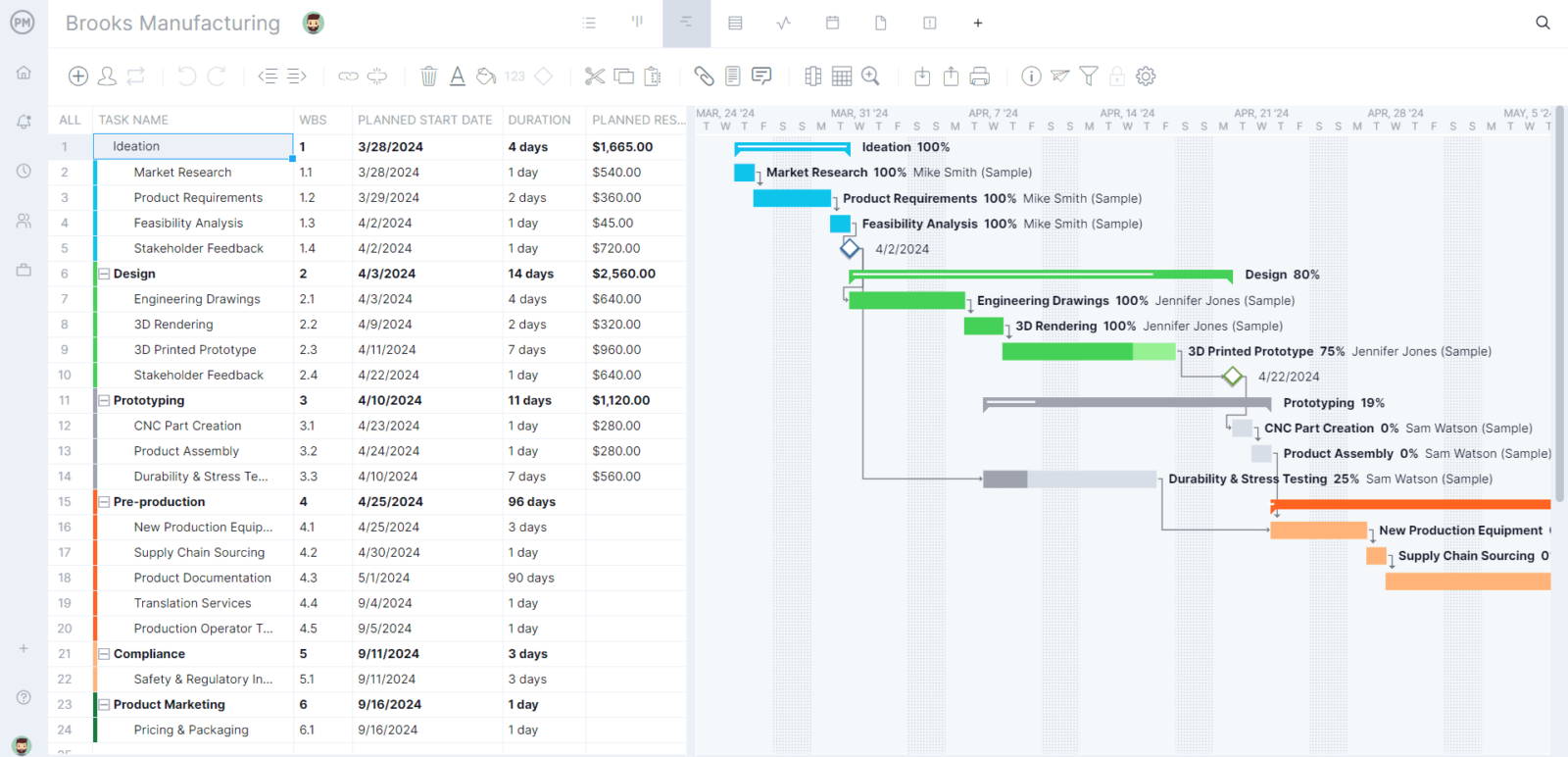
Task dependencies are linkable within ProjectManager’s Gantt chart. While other team members complete their work, these dependencies prevent others from being blocked or left waiting with nothing to do. Team members can comment at the task level for a more collaborative and efficient execution. Each task can have files attached, whether docs or images.
Real-Time Dashboards From ProjectManager Update Instantly
ProjectManager has real-time dashboards that make reporting to stakeholders fast and easy. The real-time dashboard instantly shows status updates through a series of graphs and charts that reflect many project metrics. Project managers can then filter these graphs and charts to show the data they need. Printing out these graphs and charts is an option if you want a hard copy nearby. When presenting to the stakeholders, you can answer questions by finding more details in a few clicks.
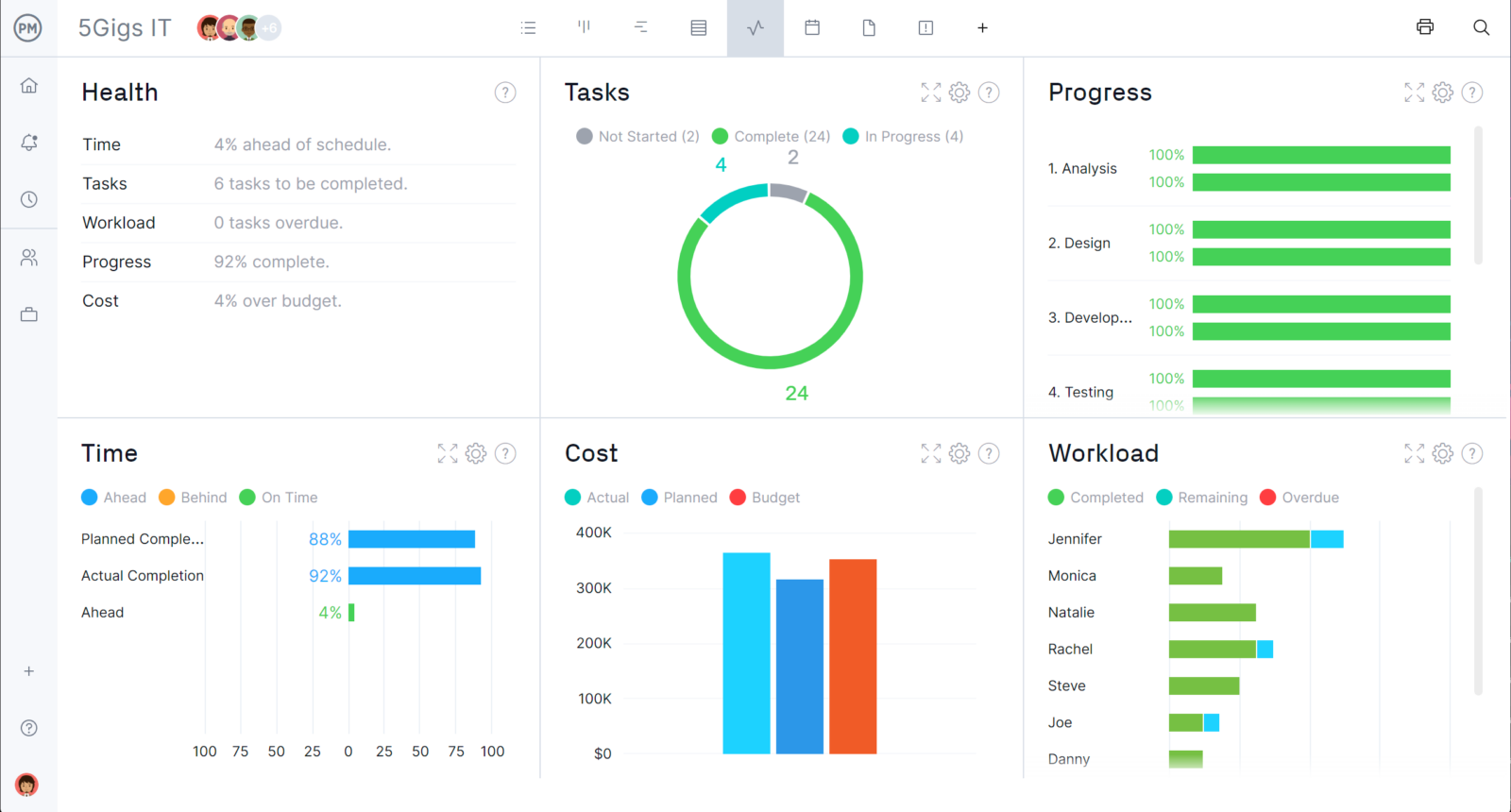
ProjectManager is project management software that gives project managers the tools they need to plan, track and report. Cost overrun is more controlled and less likely to sneak up and sink a project because of our dynamic and collaborative software, including visual workflow Kanban boards and interactive Gantt charts. Try it today with our free 30-day trial.

